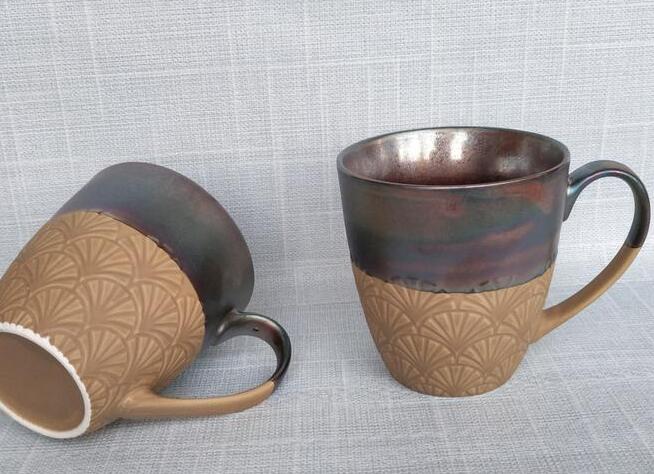Ceramic Mug Group, Mankind has known the practice of pottery since the Neolithic Age, and the use of clay to make various daily necessities has become one of the most important achievements in the evolution of human civilization.
The development of ceramics is a continuous process of growth. In this process, the cultural connotation continues to expand. The development of Taiwan’s ceramic culture has evolved with the evolution of the times, and different ethnic groups have been continuously integrated. Different ceramic concepts, technologies and products have gathered in this land in different periods to form a rich and unique Taiwan. Ceramic culture.

According to their properties,
personalized ceramic mugs can be roughly divided into four types: clayware, earthcnwarc, stoneware, and porcelain (PorceMn).
The development of human pottery civilization follows this line of development, and the development of Taiwanese ceramics cannot escape this path. In terms of the development of the above utensils, Taiwan has unearthed many pottery pieces from the Neolithic Dachakeng site, which shows that Taiwan had pottery production as early as six to seven thousand years ago. Later, the Yuanshan culture, the botanical garden culture, and the Bei Among the Nan Culture, Shisanxing Culture, and many other sites in various places, pottery is the most important cultural relic of the monks.
Later aborigines also have records of making pottery. Until now, the Yami people of Lanyu continue to use traditional methods to make pottery.
From this perspective, Taiwan’s pottery has a long history and a long history. Pottery was developed by the Han people during the Ming and Qing Dynasties. When the Dutch entered Taiwan in 1624 (the fourth year of Qi tomorrow). In order to build castles and churches in Tainan, artisans were once hired from the mainland to Taiwan to make lime bricks with
custom ceramic mugs, which was the beginning of making bricks for Taiwan. As for the production of pottery, according to Lian Heng (General History of Taiwan) (Craftsmanship. Pottery), "At the time of the Zheng clan, Chen Yonghua, a member of the army, consulted and started to burn tiles. It also explained that Taiwan has begun to burn pottery, but the pottery industry has not yet flourished. That's it. Chen Yonghua's "teacher burned tiles" time should be 1662 (the 16th year of Yongli), and it has a history of more than 230 years. It was not until 1796 (the first year of Jiaqing) that Nantou began to make glazed pottery.
In 1804 (the ninth year of Jiaqing), Yingge also began to develop the pottery industry, and it was not until the Daoguang period that Taiwan's pottery industry became more popular. During this period of time, Chinese traditional pottery technology was introduced to Taiwan along with the immigrants of Fujian and Guangdong, which made Taiwan's ceramic culture break away from the prehistoric period and enter the civilization period. The products are completely in the cultural colors of southern China. In addition to the traditional bricks and tiles used in construction, they are mainly stoneware such as water tanks, pottery urns, and clay pots for daily use. The more exquisite porcelain and bowls are imported from the coast of the mainland, and there is no room for development. Due to the entry of this strong culture, the original pottery culture of the aboriginals gradually lost their living space and headed for the fate of decline and even disappearance. Stone pottery began to develop during the Japanese ocmugation.
Entrepreneurs of
Japanese ceramic mugs value Taiwan's ceramic resources and market, so they invest in Taiwan's ceramic production. On the one hand, they introduced traditional Japanese pottery technology and ceramic varieties, on the other hand they also began the modernization of Taiwanese ceramics. During this period, apart from vigorously supporting their own Taiwanese enterprises, the ruling authorities also began to send technicians from their own countries to Taiwan to train local employees. At the same time, local entrepreneurs also began to send staff to Japan to learn technology. The introduction of Japanese ceramics technology and ideas has had a significant influence on the development of Taiwan ceramics. During these 50 years, the Oriental ceramic culture and the Central Plains ceramic culture co-existed, and Taiwan ceramics indirectly connected with advanced European and American technologies. The influx of new cultural factors turned the development of Taiwan ceramics into a new look.